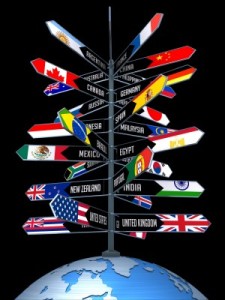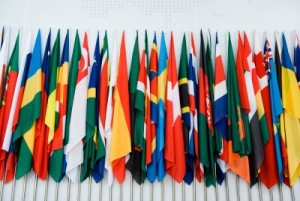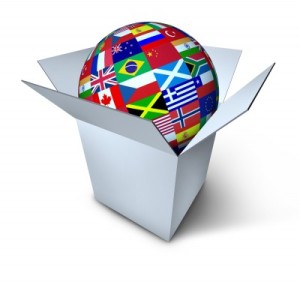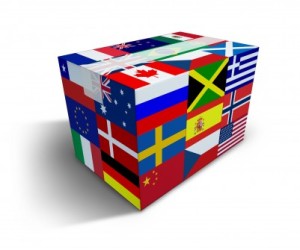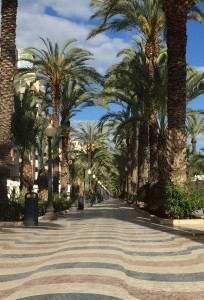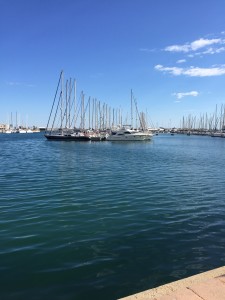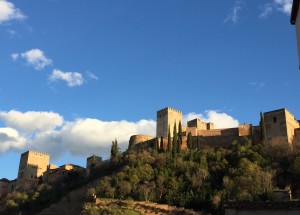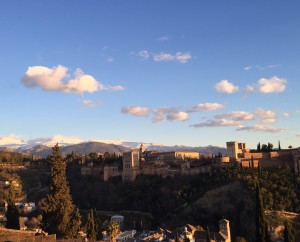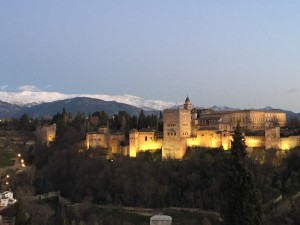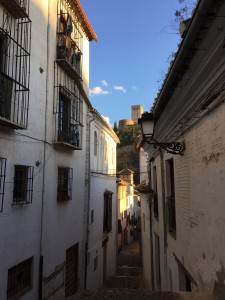 By Terri Morrison
By Terri Morrison
© Copyright 2014, All Rights Reserved
You may be familiar with meeting programs that take managers off to trendy retreats and train them in survival skills. Sometimes the participants are encouraged to walk over hot coals, repel over sheer cliffs, or do rope tricks in tree canopies. These programs are great confidence builders, but they can be expensive. And as much as your team will learn about trusting the other members of their group, their experiences may not be relevant to co-workers at headquarters, or to the diverse personnel in your Latin American, African or Far Eastern facilities.
But what if you could find an exceedingly well regarded program for your meeting with tremendous long-term benefits to not only your employees, but to others around the world?
As long as developing skills in intercultural communications, team building and problem solving are part of your corporate goals, a Habitat for Humanity Global Village project might fulfill your next international meeting requirements. And Habitat’s charitable organization status might make your stockholders happy too.
Whether the construction is in Haiti or Honduras, Habitat’s projects simultaneously provide decent housing to qualified families, and wonderful opportunities for volunteers to participate in a whole gamut of positive experiences. David Minich from Habitat’s Global Village Projects (1-800-422-4828) explained some of the nuts and bolts of conducting your meeting through the auspices of Habitat for Humanity.
What is a construction project like?
A rural Honduran doesn’t build a house like they do in Great Britain or the United States. Depending upon the normal level of construction for the local population, a Habitat house may be a three-room cement block structure—two bedrooms and a combined living/dining room without electricity. The common cooking facilities are outside, usually under a covered area (sometimes called a “dirty kitchen”) and the plumbing is rudimentary by some construction standards. However, each Habitat house makes perfect sense in its environment. What also makes sense is the participation of the families who will ultimately occupy the new abodes, along with their mortgage payments being directly allocated to future Habitat projects.
Volunteers go through an orientation in-country that prepares them for more than simply, “This is how you functionally build a house in South Africa or Costa Rica.” It expands their knowledge of the people they will work with, and helps the volunteers honor the cultures of the host countries.
How long does a construction project last and how many people are involved?
Flexibility is a great asset of Habitat’s programs. Projects can be as short as five days or up to 20 days. Crew sizes vary as well, with between five and 10 North American volunteers working side-by-side with five to 10 local participants, which includes the home’s future owner.
How are security issues addressed?
There are minimum standards that are followed everywhere, including emergency transportation and evacuation services. Keep in mind that Habitat builds where the need is—from Georgia to Ghana. Corporate sponsors are always welcome to send their security personnel to visit the sites, and accommodations can be made for their requirements. You might want to ask whether former President and Nobel Laureate Jimmy Carter sleeps in a sleeping bag on the floor with a group of people in a guest house when he and his wife spearhead their major construction event every year.
What are the benefits?
Volunteers gain a tremendous sense of accomplishment from completing a complex, physical project of this magnitude, within a relatively short time frame. They establish personal relationships with a diverse team of associates, and walk away with an expanded knowledge base about different housing and lifestyles around the world.
On a corporate level, the end results can be even higher. While the charitable deductions are obvious, the positive publicity and increase in employee morale can be tremendous. Some firms, like The Gap Foundation, offer a stint with Habitat as a reward to employees who have done a stellar job of community service during the year. And other corporations coordinate their involvement in Habitat projects with major company milestones.
During the last few years, many individuals have felt the need to volunteer more of their time in order to get a positive balance back into their lives. On a larger scale, when companies contribute to the global community, their actions raise the morale of our environment worldwide.
What is the end result?
There are millions of families living in sub-standard housing in the United States alone. Besides providing a comfortable, safe shelter for people who actively participate in the process of their own home’s construction, a program like Habitat provides volunteers a structured, positive experience that they can relate to on many levels— personally, physically and philosophically.
If your firm is searching for different means to take the "higher ground" with employees and clients, consider the option to schedule your next corporate meeting around a volunteer effort. It’s a wonderful way to incorporate a little faith, hope and charity into your corporate agenda.
 Lauren Bacall and Humphrey Bogart made their first film together, To Have and Have Not, on which Caribbean island?
Lauren Bacall and Humphrey Bogart made their first film together, To Have and Have Not, on which Caribbean island?

